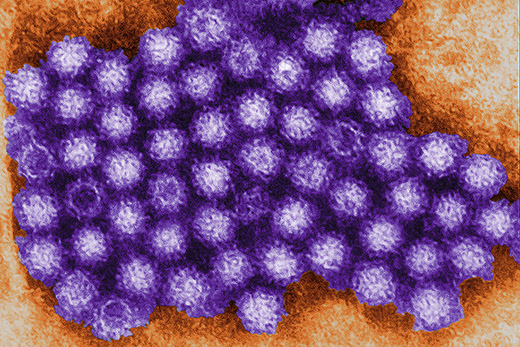Researchers at Emory’s Rollins School of Public Health have received a five-year, $1.7 million R01 grant from the National Institutes of Health/National Institute of General Medical Sciences to help guide norovirus vaccine decision-making. The grant will support the researchers’ multiscale mathematical modeling studies, which aim to understand the dynamics of norovirus at the human host, viral and epidemiological levels.
Led by Ben Lopman, PhD, the research team which includes the Emory College of Arts and Sciences and the College of Public Health at the University of Georgia will conduct a series of studies using mathematical models to address questions like how many strains of norovirus does a vaccine need to protect against, and for how long might protection last.
“Norovirus, like the better-studied influenza, is diverse and rapidly evolving, so it’s been hard to develop effective vaccines,” says Lopman. “But, we don’t yet have the richness of data or depth of understanding about norovirus biology or epidemiology. Our team brings together experts in norovirus with collaborators who have developed innovative mathematical models to study flu. With this investment, we’ll apply those methods to advance our understanding of norovirus.”
The team will also be studying whether the vaccine can reduce how infectious people may be.
“When a person sheds less virus, they are less likely to transmit,” said UGA’s Andreas Handel, who will be applying models to individual-level data collected from the company developing the norovirus vaccine.
“So, if a vaccinated person sheds less virus than people who don’t get the vaccine, they would have an impact on the wider population,” he explained. “This is how the different scales connect.”
Norovirus is the most common culprit for hospitalizing children with vomiting and diarrhea in the United States. In the U.S. alone, noroviruses cause more than 20 million episodes of diarrheal disease annually. On a global scale, norovirus kills 200,000 people every year.
“A norovirus vaccine would be a tremendous asset for public health,” says Lopman, who notes that vaccines are currently in late-stage human trials. “In the end, we want a norovirus vaccine that will be most valuable for public health. This research will aim to steer vaccine development and, ultimately, vaccine use in that direction.”

